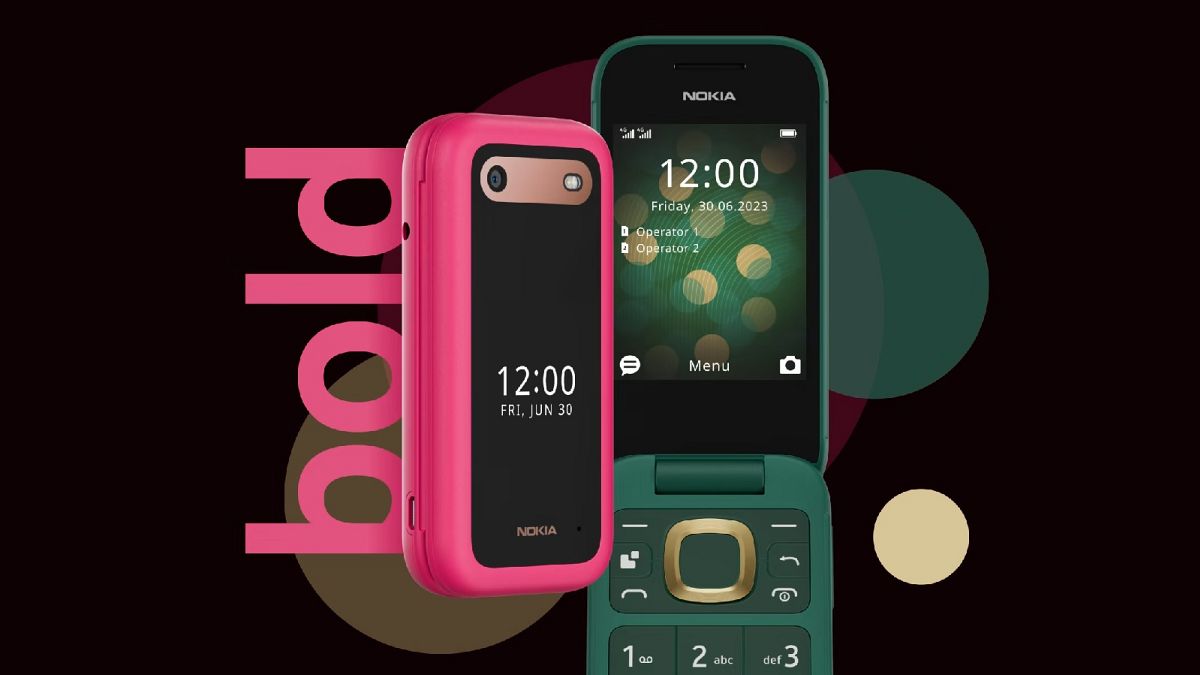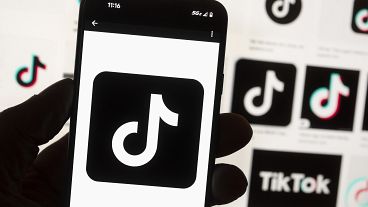Gen Zs and millennials are turning back to "dumb phones" and rediscovering the pleasures of the offline world with flip devices.
In a world obsessed with smartphones, it may come as a surprise that a growing number of teenagers are opting for "dumb phones" instead.
The stripped-down, basic mobile devices we might have donned a decade or two ago are making a comeback among the younger generations, as teenagers seek to regain independence from technology.
In the United States, sales of phones with just basic call and text capabilities were up in 2022 for HMD Global - the maker of Nokia - with tens of thousands sold each month.
"We see that the market for flip phones is up 5 per cent," said Lars Silberbauer, chief marketing officer of Nokia Phones and HMD Global.
"We've doubled our market share in the last year of flip phones, which is quite important for us. And we see that is now picking up in Europe," he told Euronews Next.
"I think the trend is really [about] people taking control of their own lives, of their own digital lives," he adds.
What's a 'dumb phone'?
With their limited features, dumbphones - usually flip phones - provide a simpler and less addictive user experience than their smartphone counterparts.
The devices prioritise essential telephone functions, such as making calls and sending texts. They eliminate the temptations of social media platforms that consume, on average, over 7 hours a day for more than 50 per cent of teenagers, according to a survey done with over 40 thousand participants on Real Research, an online survey app.
The long hours of scrolling have proven to have a detrimental effect on our psychological well-being. Multiple studies have shown a potential connection between endless scrolling and the development of ADHD symptoms, depression, anxiety, and sleep deprivation.
Silberbauer thinks the rise of dumbphones highlights a growing awareness among teenagers about the impact of technology on their own mental health.
"We can see from the research that young people are struggling with mental health, and so they're opting out of social media," he says, adding that he himself has jumped into the trend, ditching his smartphone and turning to his dumbphone during the weekends.
"I think you can see it with certain Gen Z populations — they’re tired of the screens," said Jose Briones, dumb phone influencer and moderator of the subreddit 'r/dumbphones' - a community about dumbphones, dumbed down smartphones, and feature phones - to CNBC.
In the subreddit, users are encouraged to "join the revolution and enjoy the simple life!"
"Hey everyone, looking to make the move toward a dumb phone as my screen addiction has gotten pretty bad. I've used the dumbphone finder but wanted to ask for more perspectives," wrotes u/findlaymurdoch.
90s nostalgia
Millennials, for years the young generation, are now getting old, and in recent years, popular culture has been captivating their hearts with the sentiment of nostalgia.
In parallel, Gen Zs, the generation that grew up in front of the screens, appears to be fascinated by a past they did not get to experience. Retro-inspired video games, for example, with pixelated graphics and simple gameplay, have regained a devoted following.
The past becomes reminiscent of a time when life seemed simpler and more carefree, says Silberbauer, and this yearning for the past has also driven the rise of the dumbphone trend, he adds.
"People want to go back to the early 2000s or the '90s, I think that's a remembrance of a happier time, a time where things were a bit simpler".
'Dumb phones' vs smartphones: What's the difference?
While smartphones offer advanced functionalities like an endless amount of applications, social media, and touchscreen displays, dumbphones are designed to be “basic phones,” with limited features and capabilities.
The dumbphones of the 2000s have not exactly remained untouched, however, and there is, "a whole range of dumb phones" explains Silberbauer.
Some of the contemporary improvements include 4G network coverage, upgraded cameras, and upgraded colours, "but overall, it's pretty much the same thing".
It is also possible to access a variety of features and services, but the phones are designed to make it “a bit tricky for you to actually do that”.
It is just "enough for weekends if you want to hang out with the kids, your partner, your friends and so on," allowing you to "still be connected, but actually really experience life," said Silberbauer.
Nokia’s dumbphones are sold with different operating systems, including KaiOS, which allows for a "light version of WhatsApp, which some people need," explained Silberbauer.
"You can pick and choose what functionalities you actually want and still have a phone with a battery that lasts like 31 days on some of them, so you can charge your device 12 times a year. That's it".
Smartphones are not expected to disappear: they fulfill a different market.
Nokia continues to sell smartphones, and in January this year, they introduced a unique innovation: repairable phones.
"They are repairable and sustainable," said Silberbauer, adding that they are "one of the most sustainable phones on the market".
"You can basically repair the phone yourself with just a guitar pick and a small screwdriver. You can change the screen, the charging sockets, and the battery within a couple of minutes".
The company wants "to keep phones in people's hands for longer" - but not literally. They want to avoid the need for their customers to have a new phone every single year, saying "that's not a business model that we really want to satisfy".
Machines that are thrown away instead of being fixed already produce 35 million tonnes of waste and 261 million tonnes of CO2 emissions every year in Europe, according to the European Commission. And in March this year, they announced they would force companies to offer consumers the right to repair their devices or machines.
Under the proposals, a legal warranty period of two years, for example, would require producers to offer repair services, if doing so does not cost more than a replacement. Nokia is going one extra mile.
"I can promise you that the next generation will be even easier to repair," noted Silberbauer.
Watch the video in the media player above for more from this interview at the 2023 Cannes Lions Festival of Creativity.



